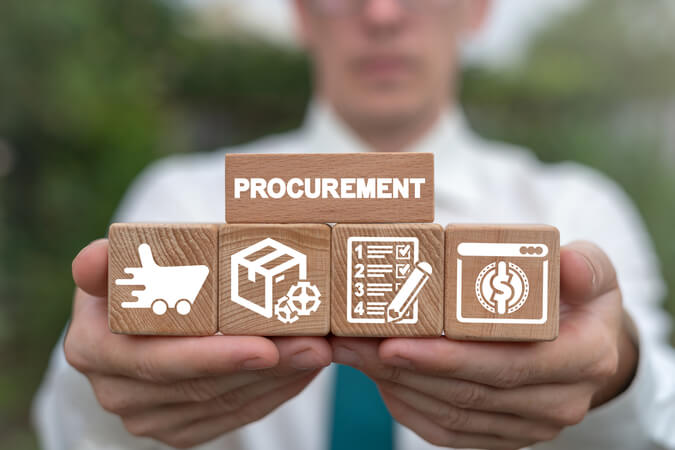4 Trending Corporate Gifting Ideas of 2023

4 Trending Corporate Gifting Ideas of 2023
The global corporate gifting market size was valued at more than $75,00,00 million in 2022, expected to reach $1,20,00,00 million by 2028. This growth is largely attributed to the fact that corporate gifting is no longer restricted to the holiday season.
Corporate gifts are now sent all year round as they help build professional connections and maintain relationships with employees, customers, and partners. In fact, most companies send corporate gifts to their existing clients as a token of appreciation (50%) or to acknowledge an employees’ milestones (65%) — the two most popular corporate gifting occasion.
But what do you give your employees or clients that is meaningful yet trending in 2023? Continue reading to know!
4 Top Trending Gift Ideas This Season
Virtual Experiences
In 2023, businesses will seek out virtual experiences to present as corporate gifts as remote work becomes more prevalent In fact, virtual experiences are among the five most popular corporate gift items.
Virtual cooking lessons, wine tastings, and team-building events will all be trending options as they allow teams to connect and bond even when they are not physically present.
Gift Cards
As experiences become more common, gift cards are growing in popularity. Gift cards, both digital and physical, are likely to dominate gifting categories over the next year.
Plus, retailers may be able to capitalize on a sizable untapped market by making gift cards more personalized.
Eco-friendly Gifts
There has been a change in recent years toward valuing sustainable processes and products, and eco-friendly business gifts will be more popular than ever in 2023. Almost 70% of consumers regard a brand’s environmentally friendly or sustainable initiatives.
Furthermore, by providing eco-friendly presents, businesses indicate that they care about more than just money. They convey a commitment to making a positive environmental effect and supporting sustainable practices.
Inclusive and Diverse Gifts
When you incorporate diversity, equity, and inclusion (DEI) concepts into your gifting strategy, you create an inclusive environment in which everyone feels noticed, appreciated, and respected.
Over 45% of the companies currently support DEI through corporate gifting. As a result, consider collaborating with local craftspeople and companies from varied communities to empower them and enhance your brand reputation.
How to Source Corporate Gifts?
Over 50% people outsourced part or all of their corporate gifting requirements. Organizations that manage end-to-end corporate gifting internally experience more obstacles than those that outsource (through a service provider or a gifting platform).
Outsourcing to a gifting service allows firms to centralize and streamline corporate gifting. It also reduces expenses and creates more engaging gifting experiences by easing friction points such as inventory management and shipping.
However, you should keep some factors in mind while choosing your outsourcing partner, such as:
- Access to multiple brands and retailers
- Personalization options
- Features to manage gift inventory, storage, and shipping
- Range of products
- Shipping options such last-mile delivery and pan-India shipping
Last-mile delivery refers to transporting the goods to the end consumers — usually their houses. It plays a vital role in corporate gifting, as a negative delivery experience can result in dissatisfied recipients, negative reviews, and the loss of future business opportunities.
While seamless and efficient last-mile delivery solutions can lead to enhanced customer loyalty, increased sales, and a competitive edge for businesses.
Get Trending Gifts Items with Moglix
Corporate gifting is no longer limited to the festive season. Instead, it now offers a year-round opportunity to create and strengthen relationships, which is vital in the current work culture.
A gifting provider such as Moglix streamlines your entire corporate gifting journey. It empowers decision-making and removes obstacles by offering features such as access to over 100 brands, pan-India last-mile deliveries, order tracking, and customer support. Get a quote now and start your corporate gifting program.
P2P Automation: The Backbone of Resilient Businesses

P2P Automation: The Backbone of Resilient Businesses
Procurement plays a crucial role in delivering cost savings and driving business success. And with over 70% of surveyed CPOs[1] expecting procurement risk levels to remain elevated for the foreseeable future, investing in automating P2P processes has become a necessity.
Procure to pay (P2P) processes enable businesses to document their complex supply chains right from need-based order placement to final payments, affording greater visibility, enhanced operational efficiency, and improved supplier relationship management.
In this article, we will outline all that falls under the ambit of P2P solutions and how automating them can help create streamlined supply chains and resilient organizations.
Understanding Procure to Pay (P2P)
Alternatively called purchase to pay, procure to pay (P2P) is a systemic process involving the decision to procure goods, making purchase requisitions, accounting for them, and paying the suppliers. It aims to align and integrate the procurement and accounts payable functions of an organization to allow for superior supply chain management. It includes the following components/stages:
- Requisition: Based on the business needs, a purchase requisition order is made for the identified product to various suppliers.
- Contract Management: After selecting a suitable supplier, they are sent a formal purchase order. Conversely, suppliers share their invoices with the business.
- Invoice Approval: Once the products are received, the company matches the order against the invoice and approves it if no discrepancies are found.
Payment: The accounts payable team processes the invoice and releases the payment.
The Need to Automate Procure-to-Pay Processes
As the P2P process has several touchpoints, it is prone to inefficiencies, delays, backlogs, and repetition. A poorly designed procure-to-pay process can escalate costs due to inconsistent/late payments, resource wastage for manually meeting unforeseen bottlenecks, and supplier payment disputes.
Poor P2P visibility also raises regulatory and tax compliance issues, further damaging the organization’s credibility. So, by automating and optimizing their workflow using procure-to-pay software, businesses can control maverick spending, improve purchase efficiencies, and make their supply chains intelligent and agile.
Benefits of Procure-to-Pay (P2P) Automation
Technological advances such as robotic process automation (RPA), machine learning (ML), artificial intelligence (AI), and the like are transforming the way P2P processes are run. By analyzing historical trends to automate procurement and improving supplier selection, they are yielding massive cost savings–as corroborated further by over 40% of CPOs[2] vying to invest in procurement automation, such as procure-to-pay software. The key benefits of procure-to-pay optimization are as follows:
- Complete Visibility: End-to-end P2P automation entails maintaining a complete record of purchases, orders, and payments, which reveals data optimization opportunities, enhances supply chain visibility and transparency, and helps identify and resolve major disruptions.
- Reduces Costs: By deploying procure-to-pay software, companies can improve their forecasting and spend management, avoiding expensive spot buys. Automating P2P processes also helps organizations identify suitable suppliers, enabling better price negotiation. Consistent payments also reduce overall processing times and afford opportunities for availing discounts.
- Enhanced Efficiency: Procure-to-pay optimization reduces the scope for human errors caused by siloed databases and workflow systems. It centralizes procurement and payable processes, thereby streamlining workflows, improving financial accuracy, and enhancing efficiency.
- Prevents Frauds: As procure-to-pay software follows strict invoice matching and supplier selection rules, it helps minimize frauds like diverging significantly from existing prices for immediate purchases or granting contracts to unqualified vendors due to personal relationships.
- Better Supplier Relationships: Procure-to-pay software automates invoice and payment processing, ensuring suppliers can check their invoice status in real-time and get paid on time, further improving supplier management.
Embrace Moglix’s P2P Automation Solutions to Unlock Business Resilience
Moglix’s procurement solutions, such as P2P automation, serve as the backbone of resilient businesses, empowering them to navigate procurement challenges with agility and efficiency. Moglix has already helped India’s largest cement manufacturer achieve a massive 20% increase in efficiency by automating its P2P processes, thus reducing purchase requisition to purchase order times. Download the case study for more details or learn more about Moglix’s solutions.
Fortifying Supply Chains with Supplier Risk Management Strategy

Fortifying Supply Chains with Supplier Risk Management Strategy
Did you know that 88%1 of the world’s leading companies are not sufficiently protected against supply chain disruptions? As per this World Economic Forum report, including supplier risk management in your B2B supply chain management strategy is a key to building a resilient supply chain.
B2B supply chain management is the process of identifying, assessing, mitigating, and monitoring potential threats and opportunities your suppliers pose. So how can supplier risk management shock-proof your supply chain? Continue reading to find out.
Mitigating Supply Chain Disasters
Supplier risk management is about proactively identifying potential risks, creating strategies to mitigate these risks, and building a supply chain that can withstand disruptions and adapt to changing circumstances.
Why is it important? Besides contributing to the company’s overall growth and sustainability in an uncertain business environment, supplier risk management can help a company in the following ways:
- Reduce reliance on a single supplier and diversifying sources of procurement.
- Helps identify potential disruptions and develop strategies to mitigate their impact, ensuring continuity of operations.
- Minimize costs due to production delays, expedited shipping, or sourcing from alternative or expensive suppliers by anticipating and preparing for potential risks.
Boosting Business Performance Through Supplier Risk Management
Over 50% of businesses consider supplier collaboration a key focus to improve B2B supply chain management. Because it empowers them to make the supply chain more consolidated, resilient, and optimized, which results in the following benefits:
- Increased Visibility: While managing supplier risk, you’ll have access to real-time supplier data that can help identify and alert potential risks and opportunities in real-time. You could also get possible actions and outcomes based on supplier data and risk scenarios.
- Reduced Risk: A robust supplier risk management system ensures you rely on suppliers vetted and monitored for their performance and compliance. This can reduce the number of contact points and potential failure points in the supply chain.
- Increased Efficiency: You’ll observe positive changes in the quality of products because you’re now identifying and mitigating supplier performance issues before they impact your operations.
- Reduced Cost and Complexity: Supply chain management software simplifies the procurement process and reduces inventory and logistics costs by optimizing the order quantities, delivery schedules, and transportation modes.
Conclusion
Managing risks in modern, multi-tier supply chains is a complex challenge, as the probability and severity of risks are hard to predict. However, supplier risk management can help organizations adopt a structured approach to deal with known risks and prepare for unknown ones. One of the ways to implement supplier risk management is to partner with a trusted supply chain solutions provider, such as Moglix.
For instance, Moglix helped a leading chemical company in India to improve its supply chain metrics by consolidating its vendors, categorizing line items, and optimizing inventory. These solutions led to a 95% punctual delivery, a 15% quicker process, and a 6% spending reduction for the company.
If you are curious about how Moglix can help you manage your supplier risks and build a resilient supply chain, schedule a demo here.
Innovating the Road Ahead: Digital Trends Transforming the Automotive Supply Chain

Innovating the Road Ahead: Digital Trends Transforming the Automotive Supply Chain
Automotive vehicles are no longer mere metal on wheels; they have transformed into advanced, software-defined, GPU and chips-based, sensor-driven wheels—a transformation that will be propelled further with the adoption of electric vehicles (EVs), autonomous driving, and vehicle connectivity innovation. So, it is no wonder that these innovative technologies, which are expected to make the auto industry worth $300 billion by 2026[1], will also reshape its supply chains.
With OEMs and their supplier base already grappling with pandemic-brought raw material and chip shortages and evolving compliance burdens, reworking their supply chain MRO to adapt to these evolving technological changes while streamlining their operations has never been more essential. In this article, we will delve into the exciting future trends expected to reshape the Indian automotive industry by driving growth and efficiency in their supply chain processes.
4 Trends Revolutionizing Automotive Supply Chain MRO
The automotive industry can build sustainable, intelligent, and resilient supply chains that deliver improved visibility and enable data-driven decision-making by incorporating the following changes in their supply chain management software.
1. Digital Procurement Solutions
Automotive players are integrating tech-enabled solutions involving automation, artificial intelligence (AI), and machine learning (ML) into their procurement platforms to optimize demand forecasting, process differentiation, supplier selection, and contract management. These B2B supply chain management solutions help reduce lead times, improve supplier relationship management and collaboration, and enable faster data-driven decision-making, creating a more agile and responsive supply chain.
2. Connected Factories
In the Industry 4.0 era, the automotive industry has been turning to connected factories where production systems and manufacturing processes are interconnected through smart sensors and the Internet of Things (IoT). This enables the real-time generation, monitoring, and analysis of data that direct decisions regarding inventory levels, shifting production lines, and the prioritization of certain production runs. It also facilitates predictive maintenance, thus, minimizing downtime and improving supply chain MRO management.
3. Supply Chain Analytics
Automotive companies lacking end-to-end digitalization suffer over 20-25% production delays due to supply shortages, compared to 10-15% for the advanced players.[2] By deploying advanced analytics tools, OEMs can process vast troves of data to gain valuable insights into demand patterns, potential production disruptions, operational costs, supply chain efficiency levels, and supplier performance.
4. Sustainability and Green Supply Chains
As automotive has a huge role to play in advancing India’s goal of achieving net zero emissions by 2070, efforts are being made to green the supply chains by implementing responsible procurement practices and reusing and recycling materials in vehicle manufacturing. The move to hybrid and electric vehicles is also aimed at achieving sustainability, requiring the redesign of traditional supply chains.
Driving Forward: The Future of Automotive Supply Chains
Automotive B2B supply chain management is undergoing a massive transformation driven by automation, AI/ML models, predictive analytics, connected factories, and more. Embracing these trends will enable automakers to foster more efficient, sustainable, resilient, and intelligent supply chains while incorporating consumer demand for more innovation, electrification, and sustainability.
Moglix can enable you to achieve such transformations through its supply chain management software, as it has already done for a leading automotive OEM dealing with a fragmented supplier base, disintegrated procurement data, poor payment terms, and working capital mismanagement. Moglix’s one-stop procurement solution helped the OEM save 2.5% of its carrying costs by optimizing inventory management and consolidating its supplier base. Download the case study for finer details or learn more about Moglix’s supply chain MRO solutions.
Pioneering Supply Chain Automation Trends of 2024

Pioneering Supply Chain Automation Trends of 2024
Gartner reports1 that companies will allocate over 70% of the supply chain IT budget to growth and performance enhancements. Consequently, supply chain management using technology is critical for businesses wanting to expand and improve.
Clearly, supply chain automation is no longer a luxury but a necessity for businesses that want to stay ahead of the competition. Automation enables companies to overcome challenges in a complex supply chain environment. It streamlines inventory management, demand forecasting, MRO supply chain optimization, supplier relationship management, and more.
But as the Gartner report revealed, merely adopting automation is not enough. To stay competitive, your automation technology should remain up-to-date. So how can you stay ahead of the curve? In this blog, we will discover the latest supply chain automation trends in 2024 that are reshaping businesses.
Transforming Decision-Making with AI
According to a PwC report2, AI and ML-based technologies are taking the lead, with 22% of executives planning to spend at least $5 million. Companies can make data-driven decisions to adapt to changing business conditions using AI and, specifically, generative models.
These models are trained on past experiences and decisions and keep humans in the loop for monitoring. And as you continue decision-making and recording consequences, you can retrain these models to augment decisions further.
Driving Efficiency with Digitalization
Over 86%3 of executives agree they need to continue investing in technology, with over 50% intending to focus on optimizing cost. Digitization enables companies to meet customer demands, manage supply-side challenges, and improve efficiency.
For example, investing in the right tools gives you access to real-time analytics, which can improve operational stability and help meet customer needs.
Moreover, your supply chain management software should evaluate your existing systems and ensure seamless integration with automation technology, improving efficiency and helping you achieve a unified supply chain.
Navigating Scope 3 Emission Control
In 2023, regulators and customers are expected to emphasize the control of Scope 3 emissions. According to KPMG4, over 50% of organizations intend to intensify their commitment to sustainable sourcing to fulfil their ESG initiatives.
Organizations will face the challenge of substantiating their emission reduction decisions, avoiding greenwashing accusations, and substantiating their low emissions. Ensuring your supply chain management software can capture real-time data across your supply chain for ESG measurement and reporting is essential.
Conclusion
Supply chain automation enables organizations to optimize their B2B supply chain management, which can help reduce costs, improve efficiency, and enhance quality. However, it is not a one-size-fits-all solution since different industries have different needs.
Therefore, organizations must adopt a customized and flexible approach by partnering with a trusted supply chain solutions provider, such as Moglix. For instance, Moglix helped a leading tire manufacturer in India to improve its supply chain efficiency through vendor-managed inventory holding. As a result, it achieved 3% savings on total cost ownership. If you want to learn more about how Moglix can help you automate your supply chain and achieve your business goals, schedule a call.
Transforming Healthcare Procurement Strategies for Cost Savings

Transforming Healthcare Procurement Strategies for Cost Savings
Indirect spend categories, such as MRO, office supplies, and logistics, are often overlooked by pharmacos as sources of potential savings. Yet, by improving their procurement process, they can unlock millions of dollars in hidden value and enhance their resilience. How can they achieve this?
The solution is MRO supply chain optimization. Pharmacos must standardise the practices, measure the performance, and use the appropriate tools and systems to manage the MRO supply chain. The question is not whether companies can afford to improve their procurement process, but whether they can afford not to.
How does this work? Let’s find out in this blog; we’ll explore how adopting smarter procurement solutions by optimising the MRO supply chain can help Pharmacos cut costs.
MRO Supply Chain Optimization for Cost Efficiency
McKinsey estimates the pharma industry will lose an average of 24% of one year’s EBITDA every ten years.
How can such losses be reduced? Consider the following strategies and their benefits:
Strategic Supplier Management
Managing supplier relationships enable pharmacies to build long-term partnerships and gain greater negotiation power. It can save cost by helping you identify multiple procurement sources and reducing reliance on one supplier.
Plus, MRO supply chain optimization can also help improve supplier performance, reduce risks, and benefit from economies of scale by establishing a clear governance structure. It can also segment suppliers based on criticality, spend, performance, and risk and develop customized strategies for each segment.
Maximizing Cost Control
Organizations can control purchase demand by minimizing consuming or procuring superfluous products. This reduces costs by lowering expenditures, eliminating waste, streamlining inventory levels, and aligning purchase decisions with clinical requirements and evidence-based practices.
MRO supply chain optimization can assist by improving data analytics and providing visibility into MRO inventory, consumption patterns, and supplier performance.
Transforming Inventory Control
A way to improve inventory control and visibility is to centralize e-procurement and leverage technology for 100% spend management visibility, automated reports, and spending trend tracking.
This can help you save costs by streamlining your purchasing process, increasing compliance, and enhancing data quality and accuracy.
Additionally, MRO supply chain optimization can identify opportunities for improvement by using analytics tools that provide real-time visibility into spend patterns, inventory levels, and supplier performance and enable optimization and innovation.
Procure Smartly with Moglix
The healthcare industry is facing unprecedented challenges, which has disrupted the global supply chains and increased the demand for essential medical supplies. In such a scenario, pharmacos need to adopt smarter procurement strategies that can help them save costs, ensure quality, and enhance resilience.
While supply chain risks are unavoidable, pharmacies can minimize their disruptive effects by adopting smart procurement solutions — and leading companies have succeeded in doing just that.
A case in point is a leading vaccine manufacturer from India, which faced high inventory holding across all plants and volatile monthly MRO procurement spend due to the fragmented supplier base for MRO goods.
By using Moglix Business’ digital platform and analytics capabilities, the company could streamline the procurement process, reduce costs by 10%, and ensure the timely delivery of critical supplies. If you want to learn more about how Moglix can help you make your supply chains more resilient, click here to schedule a demo.
Unlocking the Digital Potential of the Chemical Industry

Unlocking the Digital Potential of the Chemical Industry
According to a report by ABI Research1, the chemical industry will spend over $4 billion on digital transformation technologies in 2023 and $7 billion by 2031. This, in turn, makes operations smoother, costs lower, and helps meet customers’ demands.
But how can digital transformation solutions such as the Internet of Things (IoT), artificial intelligence (AI), and data analytics help chemical companies optimize the MRO supply chain? Continue reading to find out.
Unlocking Advantages of Digital Transformation
Technology can help chemical companies improve research and development, optimize production processes, and improve safety and compliance. Plus, it can help create new value propositions for your customers. Here’s how:
AI and machine learning:
- To help chemical companies automate tasks, provide insights into how chemicals react, and improve manufacturing environments.
- AI models can predict the quality of a product based on the parameters you set. This could reduce the need for product inspection and ensure consistent product quality.
- AI can analyze data from production operations to help streamline operations and improve product quality, accelerating innovation.
IoT:
- To monitor and optimize production processes and track inventory and shipments in real-time.
- They can also help predict raw material shortages.
- Predictive maintenance can also prevent unplanned downtime and optimize production efficiency.
Data analytics:
- It can help gain insights into their operations, identify improvement areas, and make data-driven decisions.
- You can use historical data, market trends, and other factors to forecast demand, reduce inventory carrying costs, and reduce stockouts.
- Ensure and monitor conformity with government regulations, reducing the risk of penalties.
Digital supply chain management solutions:
- It can help chemical companies achieve faster, more flexible, personalized customer experiences. They can also enable real-time decision-making and granular visibility into the supply chain.
- Plus, digital platforms can enable seamless communication and collaboration with suppliers, ensuring timely deliveries and reducing disruptions.
- Some examples include supply chain planning software, which can bring financial, commercial, and supply chain plans and forecasts together. Or clever manufacturing systems that use advanced digital technologies to automatically improve production and supply chains.
Conclusion
Digital transformation can greatly improve the chemical industry’s efficiency and profits. It helps with better decisions, automated processes, and data analytics. This can improve EBITDA by 8.5–16 percentage points2. A case in point is India’s major chemical company that worked with Moglix’s digital solutions to achieve similar results.
Moglix brought together 150+ sellers and brands for the company, organized 2500 line items, and introduced a vendor management inventory (VMI) to ensure vendors delivered on time. As a result, they delivered on time 95% of the time, reduced procurement time by 15%, saved 20% on order processing, and cut costs by 6% by standardizing prices and spending less on shipping (1% less).
To learn more about how Moglix can help your business go digital, request a demo. We’ll show you how our platform improves buying and supply management, reduces costs, improves quality, and boosts customer satisfaction.
Forging Solutions: Procurement Challenges in Metal Industry

Forging Solutions: Procurement Challenges in Metal Industry
Amidst global supply chain disruptions, market volatility, and raw material shortages, the metal and steel industry looks at a challenging procurement scenario. As per McKinsey1, steel demand outlooks have been revised from 2.7 to 1.2% for 2022 and 2023, respectively.
Steel producers should optimize their procurement sourcing strategies to secure the best quality and price while minimizing over- and under-stocking risks. One of the ways to achieve this is by using MRO procurement software, which can help streamline the purchasing process of maintenance, repair, and operations (MRO) items.
How? Continue reading to understand how a robust procurement management system can help the metal and steel industry navigate procurement challenges.
Maximize Your Potential with a Procurement Software
Procurement software is a cloud-based solution with features such as real-time collaboration tools and predictive analytics to monitor supply chain risks and opportunities.
Businesses use a procurement management system to centralize and automate the procurement process on a single platform, from sourcing to payment.
Here’s how procurement software can help your metal and steel companies navigate procurement challenges:
- A procurement management system can centralize and automate the procurement process — from sourcing to payment — on a single platform. This can reduce manual errors, save time and resources, and improve your visibility and control over your supply chain.
- It can optimize your procurement sourcing strategies to secure the best quality and price for the inputs while minimizing the risks of overstocking or understocking. Plus, it can streamline the purchasing process of MRO items and prevent duplicate sourcing, lowering inventory costs.
- Procurement software can enhance your operational efficiency and make your supply chain resilient by enabling faster and more flexible responses to changing market conditions, customer demands, and regulatory requirements.
- Your procurement software can provide data-driven insights, helping you identify the best suppliers and negotiate the best deals. Plus, features like advanced text analytics, digital simulations, and optical character recognition can help you improve contract compliance.
Conclusion
Moglix can help you with these benefits by providing various solutions tailored to your needs and challenges. Its MRO procurement software is a cloud-based platform that enables you to streamline the purchasing process of MRO items. It helps reduce costs, consolidate the vendor base, and maintain consistent procurement KPIs across sites.
Recently, Moglix enabled the procurement of structural steel, safety goods, and electricals & cables for the Central Vista Project. It consolidated 30 vendors, reduced the turnaround time to 7 days, and saved 10% in material cost by enabling the source-to-site supply chain for 90% of the required safety groups.
If you want to explore how Moglix can help you navigate the procurement challenges in the metal and steel industry, you can book a meeting with us here.
The Power of Data Analytics in Inventory Optimization

The Power of Data Analytics in Inventory Optimization
Inventory is one priciest asset for any business, usually costing between 7%–16%, including the weighted average cost of capital. This means you have the room to optimize inventory to avoid unnecessary expenses and improve profitability. But how can you do that effectively?
The answer lies in data analytics.
It includes transforming raw data into insights that help businesses make better decisions. Applying data analytics to inventory management can enhance your demand forecasting, help identify trends and patterns, and optimize inventory levels across the supply chain.
How? In this blog, we will explore how data analytics can help businesses achieve inventory optimization, one of the key objectives of MRO procurement.
Potential of Data Analytics in Inventory Optimization
As per McKinsey1, applying data analytics to inventory management can reduce lost sales by 65%, due to improved data forecasting abilities.
Some other benefits are as follows:
- Optimizing inventory levels can reduce the amount of capital tied up in inventory, as well as the costs of storage, handling insurance, and obsolescence, thereby reducing inventory costs by 30–50%2.
- Businesses can also prevent stock outs by using real-time data and analytics to monitor inventory availability, demand fluctuations, and supply chain disruptions.
Data visualization and optimization techniques can help you reduce waste, increase productivity, enhance quality, and foster innovation. This can give you a competitive edge, increase customer satisfaction, and achieve higher profitability.
Optimizing Supply Chain using Data
Supply chain solutions providers use data analytics by offering end-to-end services including data collection, integration, analysis, visualization, and optimization. Here’s how these techniques can help your business:
- Demand Forecasting: Businesses can use advanced analytics and machine learning to generate more accurate and granular forecasts for the short-term demand of products.
- Identify Trends: By leveraging data visualization and predictive analytics, you can identify trends in inventory performance, such as variability, seasonality, excess, and obsolescence. This can help you improve inventory planning, allocation, and replenishment strategies while reducing waste and inefficiencies.
- Optimize Inventory: You can also use data science and optimization techniques to determine the optimal levels for each product, location, and channel. This can help you minimize inventory holding costs, maximize inventory turnover, and enhance customer satisfaction.
Conclusion
Over 80% supply chain professionals believe analytics will play an important role in reducing supply chain costs. That’s why many businesses rely on supply chain solutions providers such as Moglix that can help you achieve significant savings and efficiencies through digital transformation of their indirect procurement.
For instance, Moglix enabled an FMCG conglomerate to unlock 4% savings on total cost of ownership by introducing catalog-based buying and streamlining their procurement process. If you want to learn more about how Moglix can help you leverage data analytics for inventory optimization, schedule a demo with us today.
Corporate Gifting 101: A Quick Guide

Corporate Gifting 101: A Quick Guide
The corporate gifting market in India is worth $2.5 billion, and is increasing at a rate of 200% annually. This surge in demand proves that corporate gifting works in encouraging repeat business, strengthening client relations, and retaining employees.
Corporate gifting is the act of touching base with employees, clients, or prospects viaa gift such as a personalized piece of clothing, or an eGift card. However, it’s not as simple as it sounds because a lot goes behind the scenes — budgeting, brainstorming, sourcing, and delivery.
So, how can you successfully leverage corporate gifting to drive these results? Continue reading as we discuss this and share the latest corporate gifting trends.
Planning for a Successful Corporate Gifting Program?
The first step in planning your corporate gifting program is determining the purpose of the program. Start by asking yourself these questions:
- What are your gifting objectives?
- What type of items do you want to gift?
- Is it budget-friendly or eco-friendly?
- What kind of story do you want your corporate gift boxes to tell?
- How can you make a long-lasting impression?
Once you have answered these questions, start with deciding on the budget and choosing the perfect gift.
Budgeting
To establish the budget for corporate gifts, you need to start by figuring out how much you can afford to spend. This depends on various factors such as:
- Your company’s size
- Your company’s total sales
- The number of people you intend to give gifts to
- Delivery locations — pan-India, international, or limited to one state?
Also, as a general rule of thumb, you should always keep some of your budget aside to cover unforeseen expenses. It’s always better to have too much than not enough because once the results of a gift campaign start to show, the lists of recipients tend to grow.
Sourcing
To help you make a more informed decision, here are some factors you should consider when choosing your corporate gifting partner:
- Wide range of high-quality gift options
- Premium quality gifts ensured.
- Cater to various budget ranges
- Bespoke tailor made gifts
- Eco-friendly gift options available
- Ease of Ordering
- Place orders for multiple recipients at once
- On time every time, anywhere in India
- Customized and personalised packaging
- Track orders, manage deliveries, and generate reports
- Ability to manage last minute order modification
- Responsive customer service to address queries
- Ensuring the protection of personal and corporate data
Last-Mile Delivery
Last-mile delivery refers to shipping items from the closest distribution hub to the final destination, such as the employee’s house. If a present is not delivered on time or in proper condition, the recipient may be disappointed and frustrated, negatively impacting your reputation.
Therefore, when choosing a corporate gifting platform, ensure they offer features such as last-mile delivery and pan-India shipping, among others.
Latest Trends in Corporate Gifting
Data suggests that the top five corporate gifts include gift baskets (48%), company-branded products (46%), and experiences like movies and sporting events (39%)
Here are some more trending gift ideas that you can follow:
- Eco-friendly gifts: You could link your gifting program to your environmental, social, and governance (ESG) practices, as eco-friendly gifts get the company’s positive reviews from over 45% of employees3. Some examples include desk plants, reusable tumblers, and plantable gifts.
- Food gift hampers: Corporate food gift sales crossed over $30 billion recently, indicating a rising trend. Savory and salty treats are also becoming increasingly popular.
- Personalized gifts: Market growth of 400% over the last few years indicates increased popularity of corporate gifts tailored to the recipient’s interests. For example, you can give your employees notebooks personalized with their names.
Plan Corporate Gifting Program with Moglix
Moglix brings to you the ultimate in corporate gifting, with our extensive range of products that cater to every need and budget. From timeless classics to modern innovations, our collection is thoughtfully curated to represent your brand’s distinct identity. With nationwide delivery, no location is out of reach. Make your gesture truly memorable and meaningful, whether it’s a grand statement or a heartfelt token. Choose us for a gifting experience that reflects excellence and care. Plan your corporate gifting program with Moglix to streamline your corporate gifting process.
